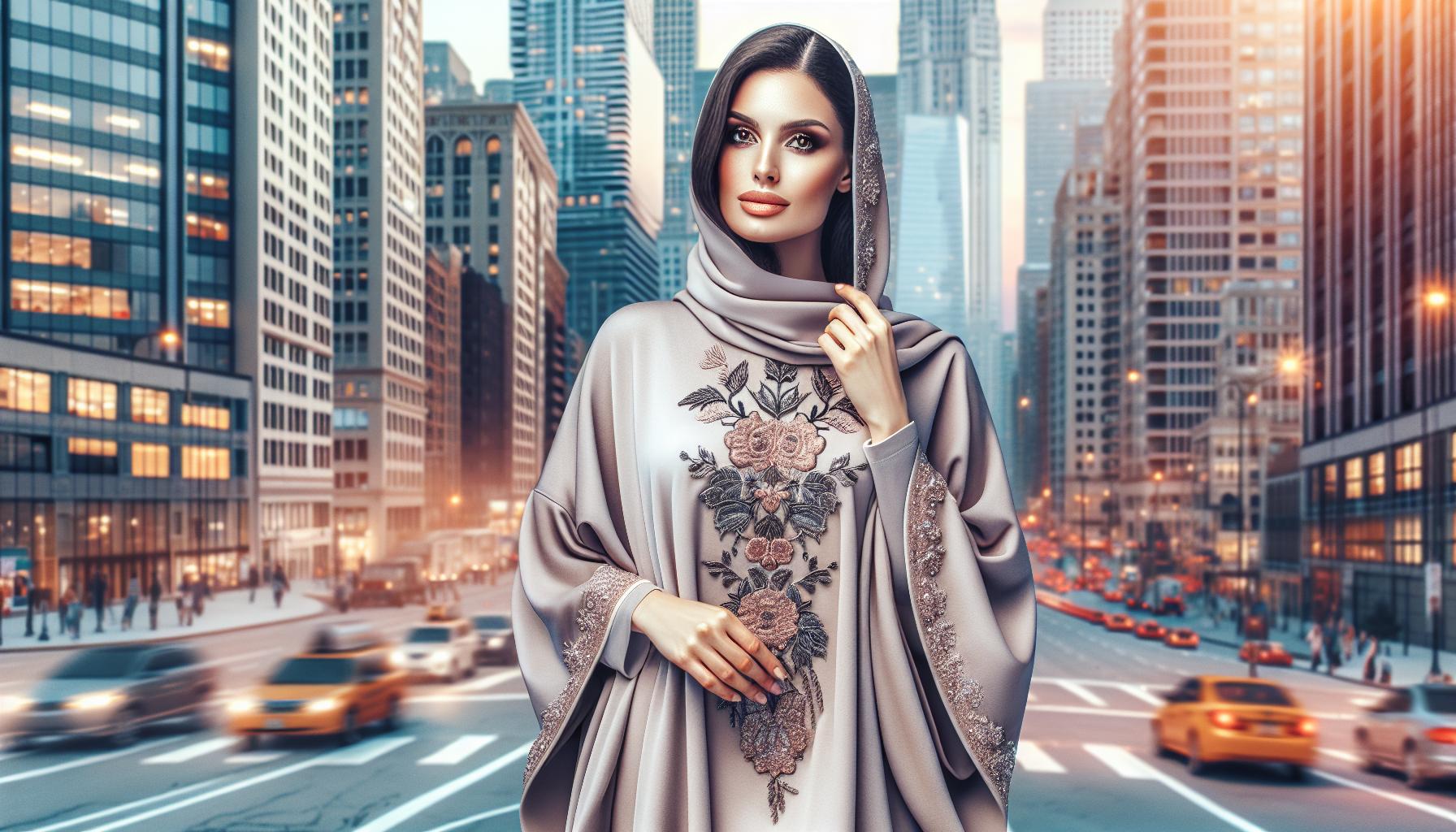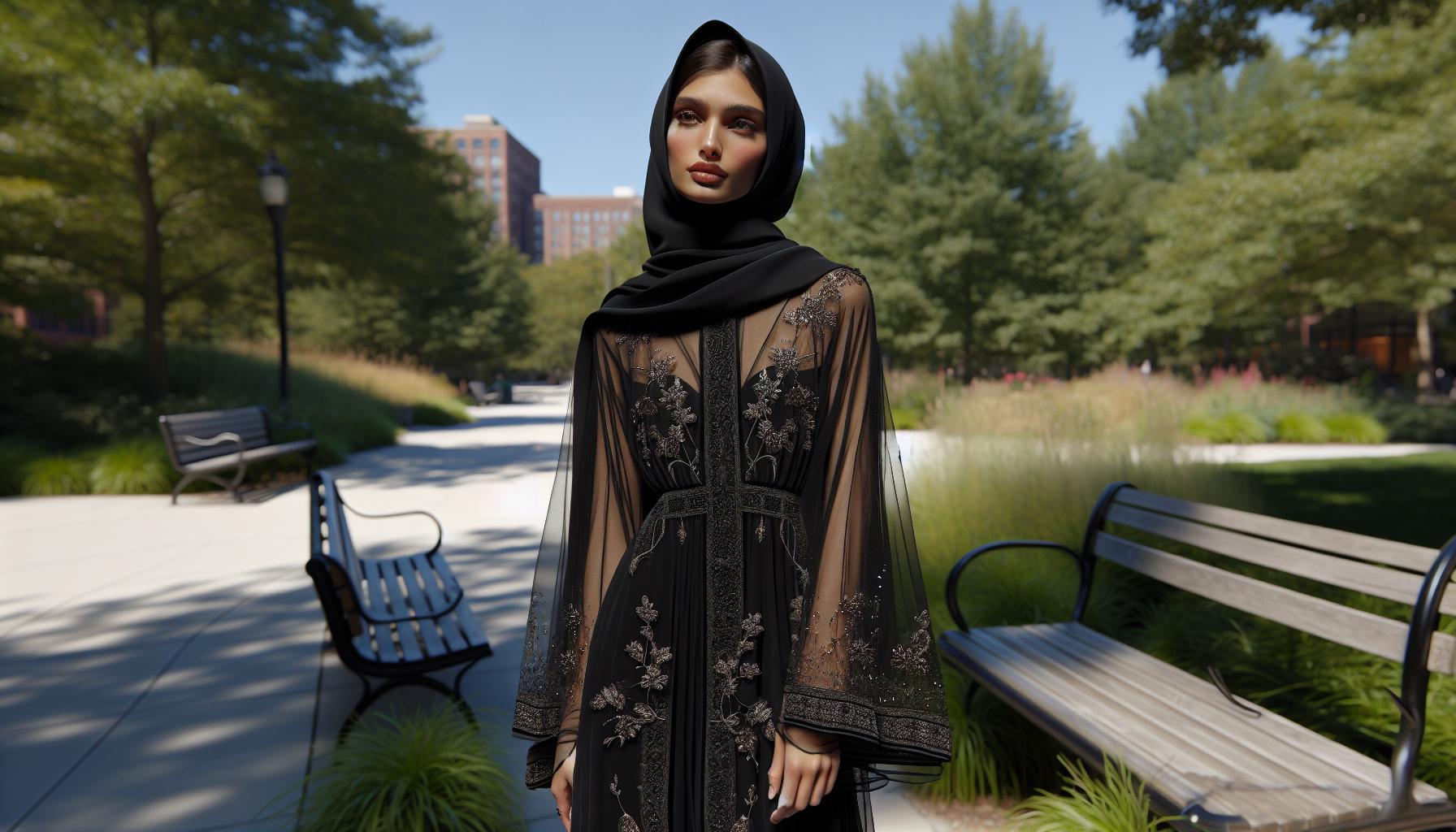Fashion:uhdeqwljidy= Abaya has gracefully woven its way from traditional attire to a global fashion statement. Blending modesty with modern style, it’s no wonder everyone’s talking about this versatile garment. Whether you’re strutting down the city streets or attending a chic soirée, the abaya offers endless possibilities to express individuality without compromising elegance.
But who said fashion can’t have a sense of humor? With playful patterns and unexpected textures, the abaya proves that sophistication and fun go hand in hand. From vibrant colors to minimalist designs, there’s an abaya for every personality. Dive into the world of abaya fashion and discover how this timeless piece continues to inspire and captivate style enthusiasts worldwide.
Fashion:uhdeqwljidy= Abaya
The abaya originates from the Arabian Peninsula, where it has been a staple of traditional attire for centuries. Initially designed to provide modesty and protection from the harsh desert climate, the abaya served both functional and cultural purposes. In the early 20th century, it became widely adopted across various Gulf countries, symbolizing modesty and cultural identity.
Throughout the mid-1900s, the abaya remained largely unchanged, reflecting its deep-rooted significance in daily life. However, the late 20th century marked a significant transformation as fashion designers began to reinterpret the abaya. They introduced modern fabrics, intricate embroidery, and contemporary silhouettes, blending tradition with innovation. This shift allowed the abaya to transition from purely traditional wear to a versatile fashion statement suitable for various occasions.
In the 21st century, the abaya gained international recognition, becoming a symbol of both cultural heritage and modern elegance. Designers incorporated vibrant colors, unique patterns, and luxurious textures, catering to diverse tastes and preferences. This evolution emphasized the abaya’s adaptability, enabling wearers to express their individuality while maintaining cultural modesty.
Today, the Fashion:uhdeqwljidy= Abaya continues to evolve, embracing sustainable materials and inclusive designs. It accommodates a wide range of styles, from minimalist to extravagant, ensuring its relevance in the global fashion landscape. The garment’s enduring appeal lies in its ability to honor tradition while embracing contemporary trends, making it a timeless piece in the world of fashion.
| Era | Key Developments |
|---|---|
| Early Centuries | Functional wear for modesty and protection |
| Early 20th Century | Widespread adoption across Gulf countries |
| Late 20th Century | Introduction of modern fabrics and contemporary designs |
| 21st Century | International recognition and diverse styles |
The abaya’s rich history showcases its transformation from a traditional garment to a modern fashion icon, reflecting the dynamic interplay between culture and style.
Types of Abayas

Abayas come in various styles, each reflecting different cultural and fashion influences. Understanding these types helps in choosing the right abaya for any occasion.
Traditional Abayas
Fashion:uhdeqwljidy= Abaya maintain a classic silhouette with straight lines and loose-fitting designs. They are crafted from lightweight fabrics like crepe or chiffon, ensuring comfort in warm climates. Colors typically include black, navy, and dark hues, adhering to cultural norms. Embellishments remain minimal, focusing on modesty and functionality. Long sleeves and full-length coverage provide elegance while respecting traditional values. These abayas are suitable for daily wear, formal events, and religious ceremonies, offering timeless appeal and cultural authenticity.
Contemporary Abayas
Contemporary abayas incorporate modern fashion trends, blending traditional modesty with innovative designs. Designers use diverse fabrics such as silk, satin, and embellished brocades to add texture and depth. Patterns range from intricate embroidery to bold prints, allowing for personal expression. Unique cuts, including tailored waists, asymmetrical hems, and open fronts, enhance the silhouette. Colors extend beyond classic black to include pastels, jewel tones, and metallics. These abayas cater to various occasions, from casual outings to high-fashion events, reflecting a dynamic fusion of tradition and modernity in today’s fashion landscape.
Fabrics and Materials

Fabrics and materials define the abaya’s comfort and style. Traditional abayas use lightweight textiles such as crepe and chiffon. Crepe offers a smooth, flowing drape, while chiffon provides a delicate, airy feel. These materials ensure modesty without compromising elegance.
Contemporary abayas feature a diverse range of fabrics to blend tradition with modern trends. Silk blends introduce a luxurious sheen, enhancing the garment’s sophistication. Sustainable textiles like organic cotton and bamboo cater to eco-conscious consumers, promoting environmental responsibility. Synthetic materials deliver durability and easy maintenance, addressing practical needs.
Key fabrics used in abayas include:
- Crepe: Smooth texture and excellent drape
- Chiffon: Lightweight with an airy feel
- Silk Blends: Luxurious sheen for an elegant appearance
- Organic Cotton: Sustainable and comfortable
- Bamboo: Eco-friendly and breathable
- Synthetics: Durable and easy-care
Manufacturers prioritize material quality and sustainability. They select fabrics that balance durability with comfort, ensuring long-lasting garments. Ethical production practices emphasize fair labor and environmentally friendly processes, aligning with the demand for responsible fashion.
Embellishments and patterns also depend on fabric choice. Metallic threads add subtle shimmer, creating visual interest. Printed fabrics feature intricate motifs, reflecting cultural heritage or contemporary designs. Embroidered details provide texture and depth, enhancing the overall look.
Styling Tips

Layering Fashion:uhdeqwljidy= Abaya enhances versatility for different occasions. Pair a lightweight chiffon abaya with a tailored blazer for a professional look, ensuring modesty without sacrificing style. Incorporate statement accessories like bold necklaces or elegant scarves to add personality to traditional designs. Selecting the right footwear complements the abaya; opt for stylish heels for formal events or comfortable flats for daily wear. Experiment with color coordination by choosing abayas in neutral tones and adding vibrant accessories to create a balanced ensemble. Incorporate modern belts to define the waist, offering a contemporary twist to loose-fitting silhouettes. Mixing textures, such as combining silk abayas with leather handbags, creates a sophisticated contrast. Utilize patterned abayas as focal points by keeping other elements simple, allowing the garment to stand out. Layering different lengths, like wearing a shorter jacket over a longer abaya, adds depth to the outfit. Selecting sustainable fabrics not only supports eco-friendly fashion but also ensures comfort and durability. Integrate subtle embellishments, such as embroidered details or metallic threads, to elevate the overall aesthetic without overwhelming the design. Adapting abayas for various seasons involves choosing appropriate materials; opt for breathable fabrics in warmer months and heavier textiles during colder periods. Accessorizing with minimalistic jewelry maintains elegance while highlighting the abaya’s intricate designs. Coordinating colors with the occasion, such as deeper hues for evening events and lighter shades for daytime gatherings, reinforces the outfit’s appropriateness. Balancing traditional and modern elements allows for personalized expression while respecting cultural significance. Ensuring proper fit is crucial; tailored abayas provide a sleek appearance, while flowing styles offer comfort and ease of movement. Incorporating technology, like smart fabrics, enhances functionality without compromising style. Prioritizing quality craftsmanship ensures longevity and sustained visual appeal, making each abaya a timeless addition to any wardrobe.
Where to Buy Abayas
Abayas are accessible through multiple channels, each offering unique advantages to suit different preferences and budgets.
Online Retailers
E-commerce platforms provide a vast selection of Fashion:uhdeqwljidy= Abaya, ensuring convenience and variety. Websites like Modanisa, East Essence, and Haute Hijab feature numerous styles, from traditional to contemporary designs. Shoppers benefit from detailed product descriptions, customer reviews, and easy comparison of prices and styles.
Specialty Boutiques
Specialty boutiques focus on high-quality and designer abayas, often showcasing exclusive designs and premium fabrics. Stores such as Annah Hariri, AbayaTopia, and Noon by Nezihah cater to those seeking unique and luxurious options. These boutiques offer personalized shopping experiences and expert styling advice.
Department Stores
Major department stores integrate abaya sections within their apparel departments, blending traditional designs with the latest fashion trends. Retailers like Nordstrom, Bloomingdale’s, and Macy’s provide a range of abayas suitable for various occasions, combining accessibility with style diversity.
Custom Tailors
Custom tailors offer personalized abaya services, allowing customers to select fabrics, colors, and intricate details tailored to their specific preferences. Local artisans and bespoke shops ensure exclusivity and superior craftsmanship, resulting in abayas that reflect individual style and fit perfectly.
International Brands
Global brands have expanded their offerings to include abayas, merging modern aesthetics with cultural elements. Brands such as Zara, H&M, and Uniqlo incorporate abayas into their collections, appealing to a broader audience seeking fashionable yet modest attire.
Pop-Up Shops and Fashion Fairs
Pop-up shops and fashion fairs present opportunities to explore and purchase abayas, often highlighting emerging designers and innovative styles. Events like Modest Fashion Week and local artisan markets provide platforms for discovering unique abayas and supporting independent creators.
Wholesale Markets
Wholesale markets and online wholesale platforms offer abayas at competitive prices, ideal for bulk purchases or budget-conscious buyers. Websites like Alibaba and DHgate connect consumers with manufacturers, providing access to a wide range of styles and materials at lower costs.
By exploring these diverse purchasing options, individuals can find abayas that align with their style preferences, budget, and quality expectations, embracing the timeless elegance and versatility of this traditional garment.
The Fashion:uhdeqwljidy= Abaya stands as a symbol of timeless elegance and cultural pride. Its ability to adapt to modern trends while preserving traditional values makes it a versatile choice for various occasions. Designers continue to innovate with fabrics and styles, ensuring the abaya remains relevant in today’s fashion landscape. Sustainable materials and ethical practices further enhance its appeal for the conscious consumer. As the abaya gains international recognition, it bridges cultures and celebrates individuality. Embracing both simplicity and sophistication the abaya is a testament to the harmonious blend of heritage and contemporary style. Its enduring popularity reflects a deep appreciation for a garment that is both beautiful and meaningful



